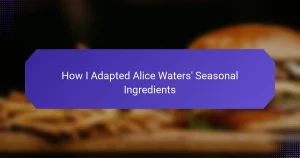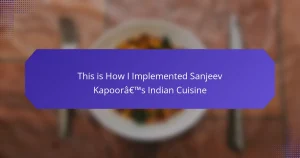Key takeaways
- Understanding French cuisine involves quality ingredients, classic techniques, layered flavors, and an emphasis on presentation.
- Essential cooking tools for French dishes include a sharp chef’s knife, cast iron Dutch oven, sturdy cutting board, whisk, and measuring cups.
- Common ingredients such as mirepoix, butter, cream, and fresh herbs are crucial for authentic flavors in French recipes.
- Patience, high-quality ingredients, and creativity are vital for mastering classic French recipes and enhancing the cooking experience.
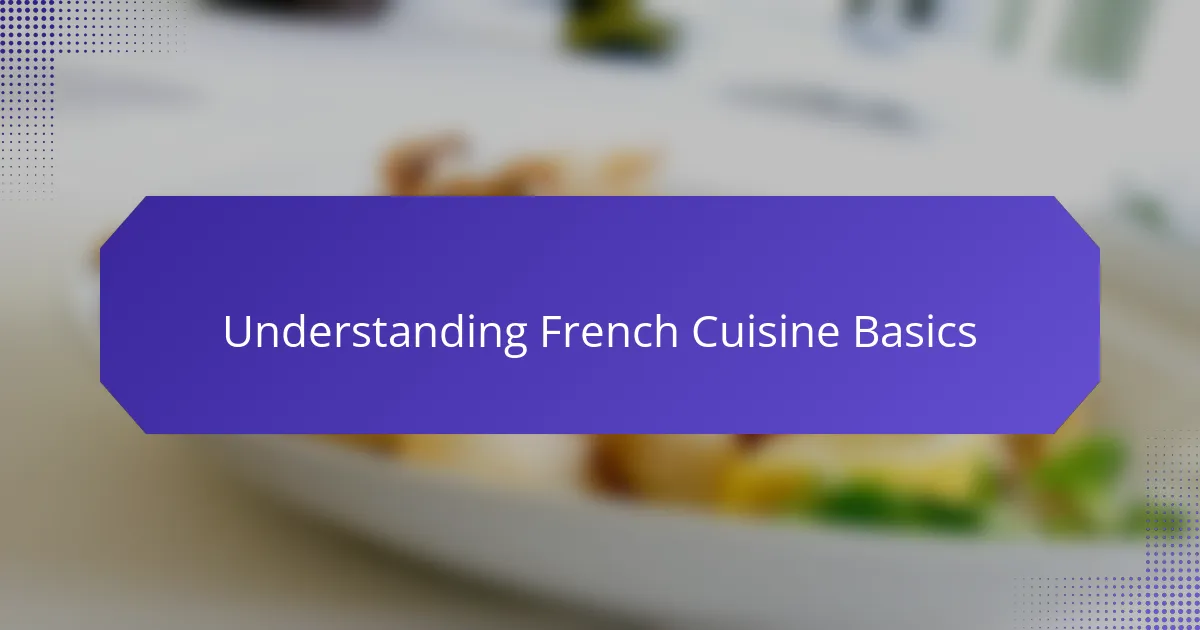
Understanding French Cuisine Basics
Understanding the basics of French cuisine is like stepping into a beautiful, intricate tapestry of flavors and techniques. I remember the first time I attempted to make a classic coq au vin; I was both excited and intimidated. Learning about the fundamental ingredients, such as fragrant herbs, aromatic vegetables, and rich stocks, transformed my cooking experience from simple meal prep into an art form.
To grasp the essence of French cuisine, it’s crucial to know these key elements:
– Quality Ingredients: Fresh, seasonal produce is a must. It’s what gives the dishes their distinctive taste.
– Techniques: Mastering classic techniques like sautéing, braising, and poaching is essential for authenticity.
– Flavor Profiles: Understanding how to layer flavors with herbs like thyme and basil can elevate your dishes remarkably.
– Presentation: French cuisine often emphasizes visual appeal, so don’t skimp on plating.
– Patience: This cuisine rewards those who take the time to perfect their dishes. My own experience taught me that the wait is always worth it.
By focusing on these basics, you can create dishes that capture the heart of French cooking, making every attempt feel like a delicious journey.
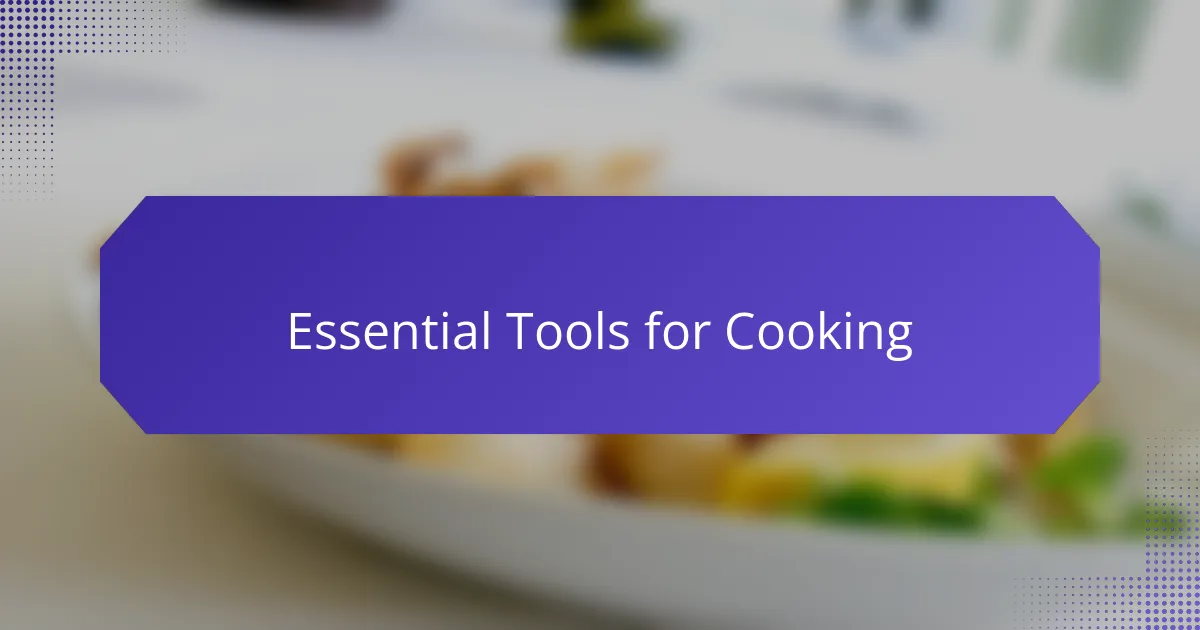
Essential Tools for Cooking
When diving into Julia Child’s classic French cuisine, having the right tools is just as important as the recipes themselves. I remember the first time I attempted a coq au vin; my flimsy kitchen knife just didn’t do the trick. I quickly realized that investing in quality tools, like a heavy-duty chef’s knife and a reliable enameled cast iron pot, is essential for achieving those authentic textures and results that honor classic French cooking.
In my experience, a sturdy cutting board is indispensable. It provides a solid surface for chopping herbs and veggies, which are fundamental in French dishes. I can’t stress enough how much easier my cooking became when I switched to a large wood board; not only does it look great on the counter, but it feels good to use.
Here’s a simple comparison table of the essential tools I recommend for tackling French cuisine:
| Tool | Description |
|---|---|
| Chef’s Knife | A versatile, sharp knife for chopping and slicing. |
| Enameled Cast Iron Dutch Oven | Perfect for slow-cooking stews like coq au vin. |
| Cutting Board | A sturdy, spacious surface for prep work. |
| Whisk | Essential for emulsifying sauces and dressings. |
| Measuring Cups/Spoons | For precise ingredient measurements. |
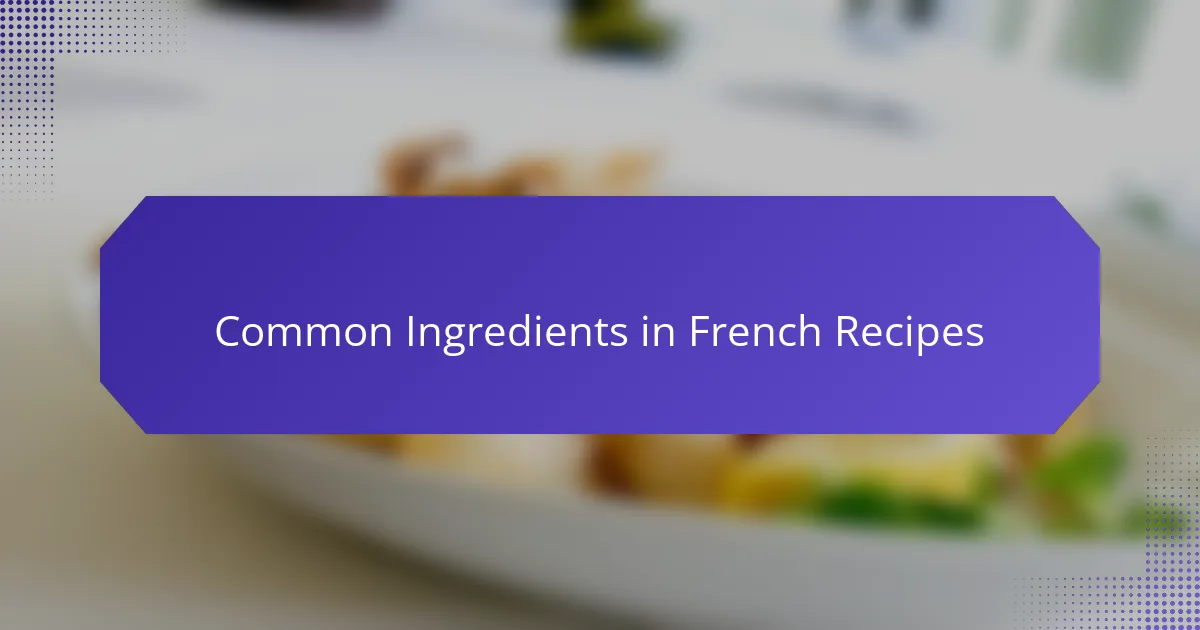
Common Ingredients in French Recipes
When I think about common ingredients in French recipes, one term always comes to mind: “mirepoix.” This flavorful mixture of carrots, onions, and celery serves as a base for countless dishes. The first time I crafted my own mirepoix, I was amazed at how such simple ingredients could transform a broth into something so aromatic and complex.
Butter and cream also play pivotal roles in French cuisine, adding richness and depth to sauces and pastries. I distinctly remember the first time I used beurre blanc in my cooking. The silky texture was a revelation! It’s fascinating how these two ingredients can elevate a dish, but it’s all about balance; too much can overwhelm rather than enhance.
Of course, let’s not forget herbs and spices, like fresh thyme and bay leaves. They’re integral to achieving the authentic French flavor profile. I used to wonder how a sprinkle of thyme could change a simple roasted chicken into something truly special. It really taught me the power of herbs in creating layers of flavor. Have you experienced that transformation in your cooking? It’s magical, isn’t it?
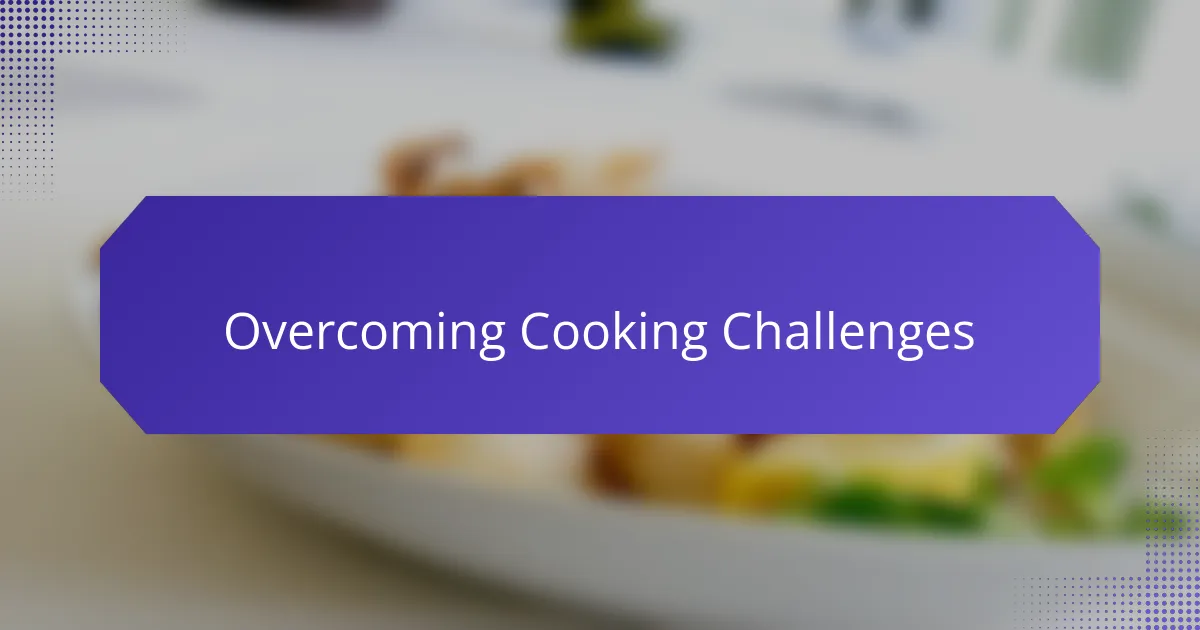
Overcoming Cooking Challenges
When tackling Julia Child’s classic French cuisine, I encountered several cooking challenges along the way. One of the most significant hurdles was mastering the techniques behind sauces and stocks. I vividly remember the first time I attempted to make a béchamel sauce; it took me multiple tries and a few burnt pans before I finally achieved that creamy perfection I had envisioned.
Each challenge felt daunting at first, but the satisfaction of finally nailing a dish made every frustration worthwhile. I recall how an unexpected setback, like curdling a soufflé, sparked a deeper understanding of the process. It was often in these moments of failure that I learned the most and found joy in the culinary journey.
Here’s a table illustrating some common challenges and my strategies for overcoming them:
| Cooking Challenge | My Strategy |
|---|---|
| Mastering Sauces | Practice and patience; watching video tutorials helped clarify techniques. |
| Timing Multiple Dishes | Creating a detailed timeline and prepping ingredients in advance to stay organized. |

My Personal Journey with French Dishes
Embarking on my journey with French dishes felt like stepping into a world of culinary elegance. I remember the first time I tried my hand at making coq au vin; the rich aroma filled my kitchen and gave me a sense of nostalgia, as if I were dining in a quaint Parisian bistro. I found that each dish told a story and challenged me to embrace patience and precision, qualities that can truly transform the cooking experience.
As I dove deeper into Julia Child’s recipes, I discovered:
- Coq au Vin: A labor of love, turning humble chicken into something extraordinary with wine and herbs.
- Boeuf Bourguignon: The richness of flavors was captivating; it required slow cooking, which taught me to savor the process.
- Quiche Lorraine: Making the pastry from scratch was daunting at first, but the satisfaction of a flaky crust was worth every effort.
- Ratatouille: A celebration of vegetables, it reminded me how simple ingredients can create beautiful harmony.
- Soufflé: The ultimate test of lightness and timing; mastering it felt like conquering a culinary mountain.
Each dish not only expanded my skills but also deepened my appreciation for the art of French cuisine.
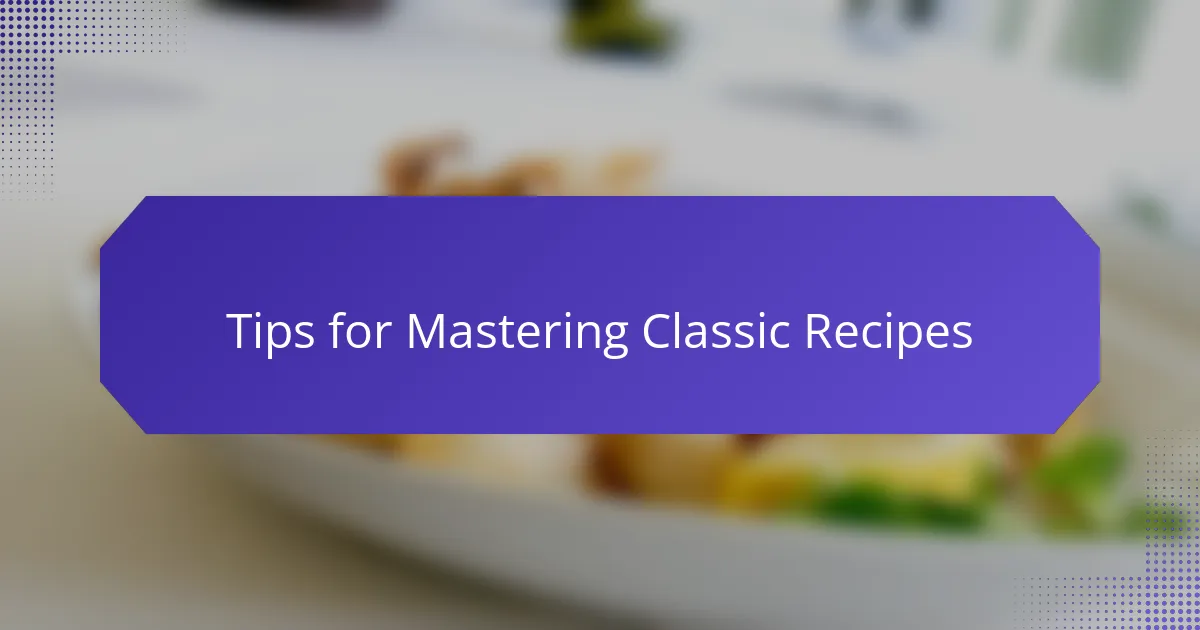
Tips for Mastering Classic Recipes
When it comes to mastering classic French recipes, patience and practice are key. I remember my first attempt at coq au vin—it turned out much saltier than intended! What I learned was that attention to detail, especially in seasoning, can make or break a dish. Don’t rush; embrace each step as part of the cooking journey.
Another tip is to invest in quality ingredients. Fresh herbs, good butter, and high-quality meats can elevate your dishes significantly. I once tried using dried herbs in a béchamel sauce, and trust me, it wasn’t the same. Always aim for the best quality—you’ll taste the difference.
Lastly, don’t be afraid to experiment within those classic frameworks. Julia Child herself was a champion of adapting recipes to suit personal tastes. This spirit of creativity has transformed my cooking and made it much more enjoyable. Remember, cooking is as much about personal expression as it is about following recipes!
| Tip | Details |
|---|---|
| Patience | Take your time with each step to ensure flavor develops. |
| Quality Ingredients | Invest in fresh, high-quality ingredients for the best results. |
| Embrace Creativity | Modify recipes to suit your tastes while respecting the classic foundations. |

